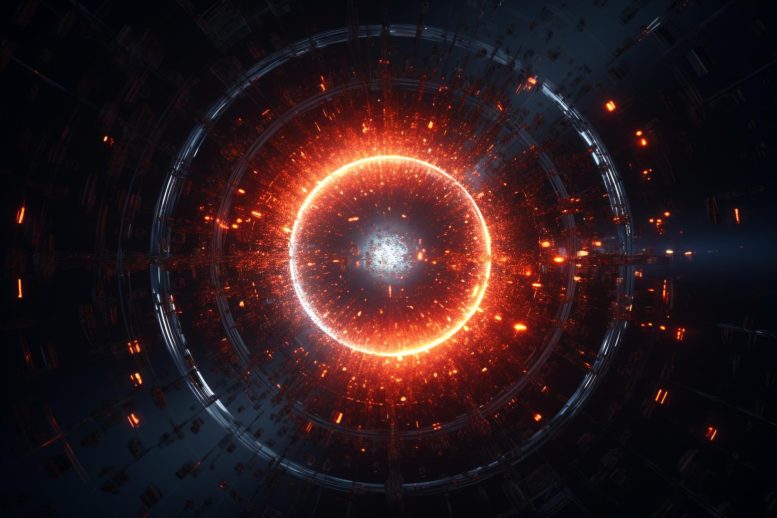
A global team of scientists has delved deeper into understanding the complex nature of dark matter, which comprises a staggering 84% of the universe’s matter content. Their focus has been on the ‘dark photon’, a theoretical particle that might bridge the gap between the elusive dark sector and regular matter.
New insights into dark matter emerge as researchers explore the ‘dark photon’ hypothesis, challenging the standard model hypothesis.
Led by experts at the University of Adelaide, a team of international researchers has uncovered further clues in the quest for insights into the nature of dark matter.
“Dark matter makes up 84 percent of the matter in the universe but we know very little about it,” said Professor Anthony Thomas, Elder Professor of Physics, University of Adelaide.
“The existence of dark matter has been firmly established from its gravitational interactions, yet its precise nature continues to elude us despite the best efforts of physicists around the world.”
“The key to understanding this mystery could lie with the dark photon, a theoretical massive particle that may serve as a portal between the dark sector of particles and regular matter.”
“Our work shows that the dark photon hypothesis is preferred over the standard model hypothesis at a significance of 6.5 sigma, which constitutes evidence for a particle discovery.” — Professor Anthony Thomas
The Dark Photon and Its Significance
Regular matter, of which we and our physical world are made up of, is far less abundant than dark matter: five times more dark matter exists than regular matter. Finding out more about dark matter is one of the greatest challenges for physicists around the world.
The dark photon is a hypothetical hidden sector particle, proposed as a force carrier similar to the photon of electromagnetism but potentially connected to dark matter. Testing existing theories about dark matter is one of the approaches that scientists such as Professor Thomas, along with colleagues Professor Martin White, Dr Xuangong Wang, and Nicholas Hunt-Smith, who are members of the Australian Research Council (ARC) Centre of Excellence for Dark Matter Particle Physics, are pursuing in order to gain more clues into this elusive but highly important substance.
Insights From Particle Collisions
“In our latest study, we examine the potential effects that a dark photon could have on the complete set of experimental results from the deep inelastic scattering process,” said Professor Thomas.
Analysis of the by-products of the collisions of particles accelerated to extremely high energies gives scientists good evidence of the structure of the subatomic world and the laws of nature governing it.
In particle physics, deep inelastic scattering is the name given to a process used to probe the insides of hadrons (particularly the baryons, such as protons and neutrons), using electrons, muons, and neutrinos.
“We have made use of the state-of-the-art Jefferson Lab Angular Momentum (JAM) parton distribution function global analysis framework, modifying the underlying theory to allow for the possibility of a dark photon,” said Professor Thomas.
“Our work shows that the dark photon hypothesis is preferred over the standard model hypothesis at a significance of 6.5 sigma, which constitutes evidence for a particle discovery.”
The team, which includes scientists from the University of Adelaide and colleagues at the Jefferson Laboratory in Virginia, USA, has published its findings in the Journal of High Energy Physics.
Reference: “Global QCD analysis and dark photons” by N. T. Hunt-Smith, W. Melnitchouk, N. Sato, A. W. Thomas, X. G. Wang and M. J. White on behalf of the Jefferson Lab Angular Momentum (JAM) collaboration, 15 September 2023, Journal of High Energy Physics.
DOI: 10.1007/JHEP09(2023)096

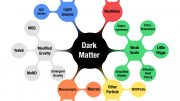


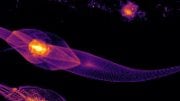
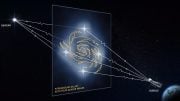

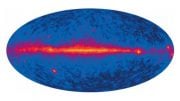

Like a hulking hologram, the dark matter industry just keeps on trudging.
A British website I’ll call “physorg” usually has dozens of loonies praising dark matter, and this dark photon news is no different, but give them a new article introducing a dark matter pictured as never before, with bright orange ripples crisscrossing at a scale of 30 thousand light years (one this site has interestingly not covered, by the way) practically the exact sort of thing I used to suggest there all the time a few years ago and everyone wants to pretend it doesn’t exist, zero comments after a week. What a pathetic global science club looks like.
Refs: “New cosmological constraints on the nature of dark matter” – physorg
“James Webb Telescope’s Unparalleled View of the Ghostly Light in Galaxy Clusters” – this site
“Harvard Astronomers Have Revealed the True Shape of the Milky Way’s Halo of Stars – this site
“NASA Scientists Probe Dark Energy – Time To Rework Albert Einstein’s Theory of Gravity?” – this site
My name at phyorg was a number they picked for me before they allowed a prominent poster there to repeatedly insult the pick. When I talk about quantum gravity ideas without on obvious source here, the source is me. Haven’t noticed anyone else borrow my name here yet, but there is a first time for everything, perhaps.
When I talk about quantum gravity ideas without an obvious source here, the source is me. Sorry no old physorg links, the one here is from September 7, 2023. The insult king member at physorg went by “Otto von Bismark” fwiw. Mostly I just try to forget the experience but the make-believe MOND crank going on this site as “What the Heck” is deja vu, all the way down to generalized AI spotting incompetence and D-K invocations.
To understand photons, one must first understand the physical essence of the speed of light in Relativity. The physical essence of the speed of light in Relativity is the synchronization of two events in a rigid body. There is no time difference in synchronization. In today’s physics, any observed speed of light with time difference in experiments is not the physical essence of the speed of light described by Relativity.
How do you ensure that the speed of light you measure is not disturbed by dark matter or dark energy between two points? How do you understand that the speed of light described by Relativity is independent of the reference frame?
What do you think is the faster speed than synchronization? Please provide an example. Don’t be fooled by the pseudo science in today’s physics anymore.
To claim dark matter is totally established as real is not science. Calling unsubstantiated theory as fact is not science. Physics is dominated today by ironically faith based declarations of certainty that are actually empty of experimental verification.
Mathematics is definitely a science. However, the facts you believe in may not necessarily be scientific. Facts may make you believe in God, but mathematics does not.
Please tell me. Which of the two-dimensional materials you observed in the experiment or the two-dimensional images in mathematics is the true two-dimensional?
Humans must accept the fact that scientific experiments are limited by nature.
Like the article says, dark photons are hypothetical. Why not consider something very likely real?
From a view of String Theory, Dark Matter appears to us as an effect of string/anti-string annihilations. As you may know, quantum mechanics requires that strings must be formed as pairs in the quantum foam – a string and an anti-string – that immediately annihilate each other. Quantum mechanics also requires both the string and anti-string to be surrounded by “jitters” that reduce their monstrous vibrating energies. What if this jitter remains for a fraction of an instant after their string/anti-string annihilations? This temporary jitter would be seen by us as matter, via E=mc2, for that instant before it too returns to the foam. That’s why we never see it – the “mass” lasts only for that instant but is repeated over and over and over, all over. Specifics on this can be found by searching YouTube for “Dark Matter – A String Theory Way”
A devout believer, just as PRL, PNAS, Sciences, Nature, etc firmly believe in:
1. Even without understanding how θ & τ were formed, it can be concluded that they are CP violations.
2. Even if two objects (such as cobalt-60) that rotate in opposite directions are asymmetrical, they are still two objects that mirror each other.
Good luck to you all.
The Dark photon adds to the mystery, try a very low energy light photon or a single or mixed part of the spectrum, the Dark matter is observable and so neutral only the slightest nudge can be in affecting a response. A conversion maybe needed to bring forward the result to the standard level.
If the photon is dark, it’s probably not a photon.
The missing gravity is energy moving away from us that we will never measure. Photons can only be noticed when they are coming directly towards us. 90% of all energy is invisible based on our position.